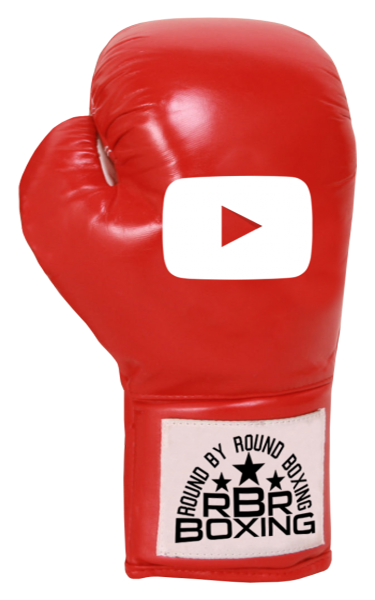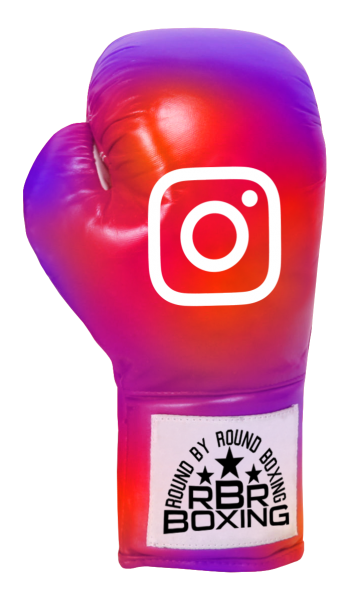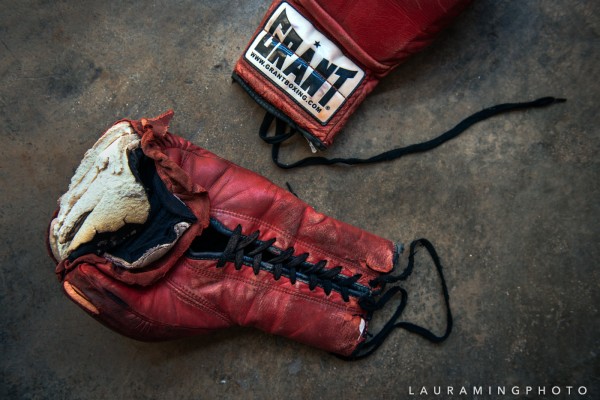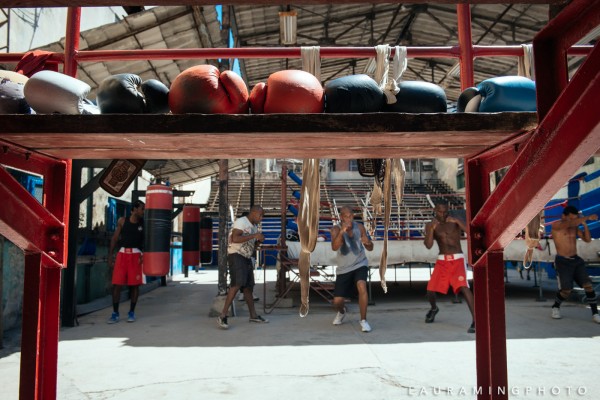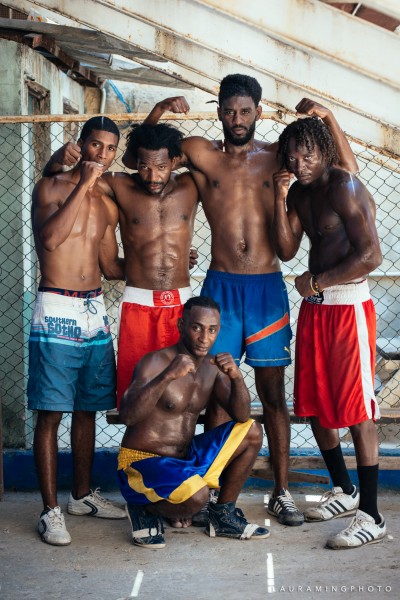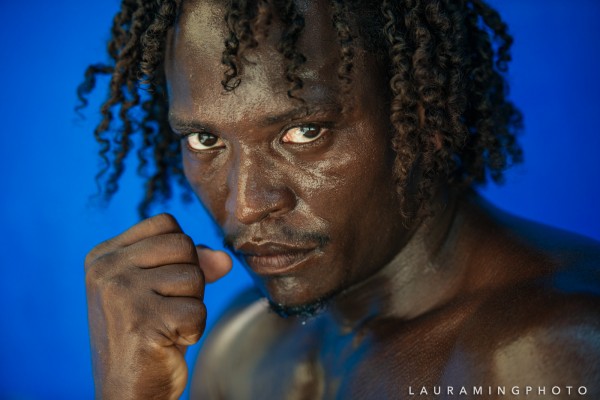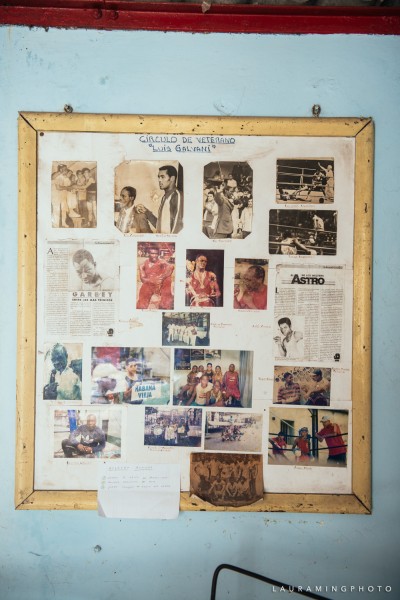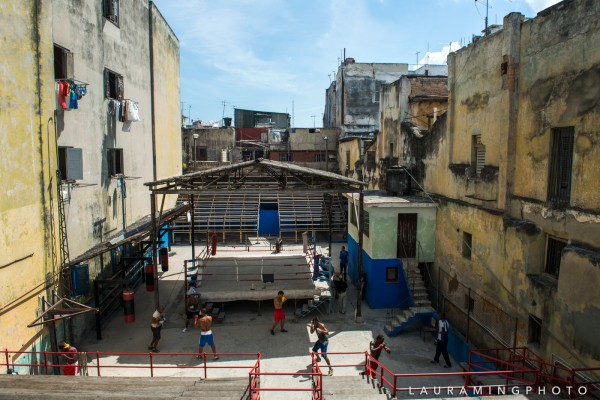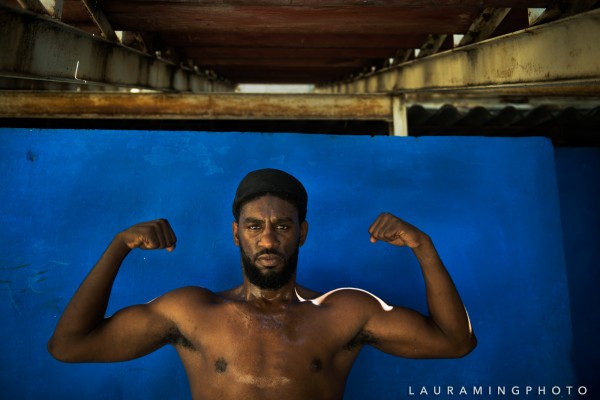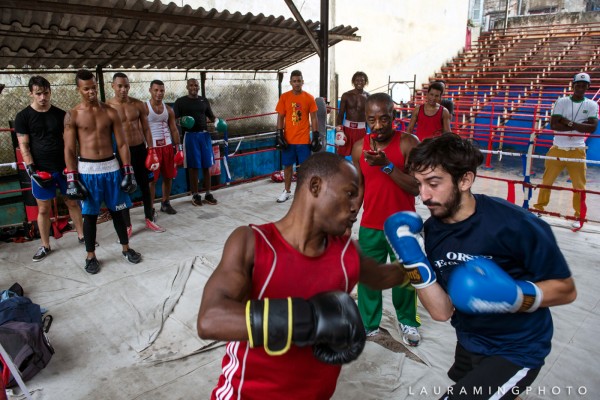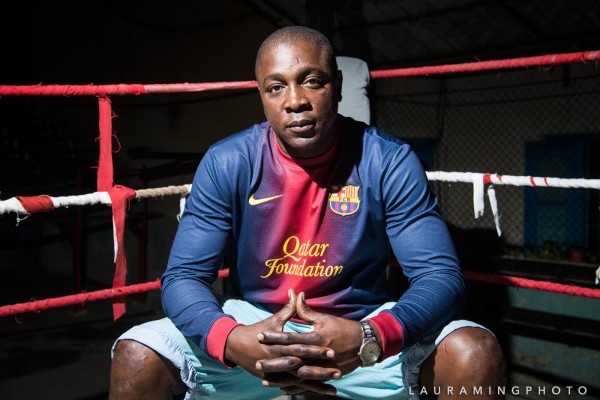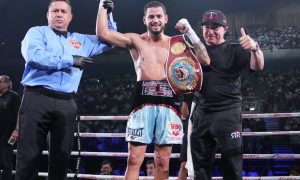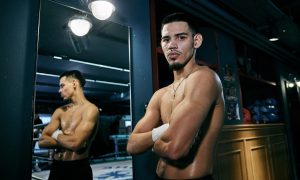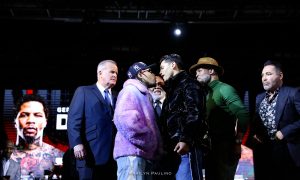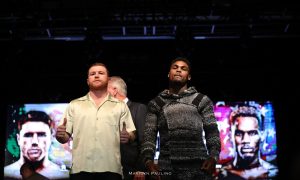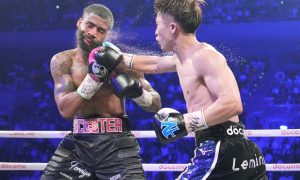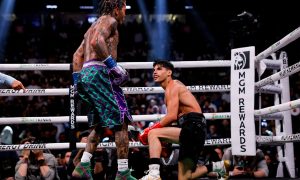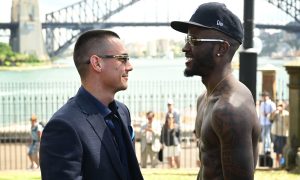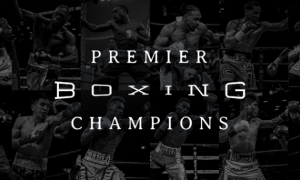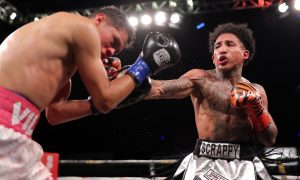Since 2013, I have made several trips to photograph the boxers of Gimnasio Rafael Trejo, one of the oldest boxing gyms in Havana. Through an unassuming street entrance, the gym expands to a large open-air space nestled between housing complexes. Rafters on opposite sides of the central ring are a space to seat spectators and dry used gloves in the unrelenting sun.
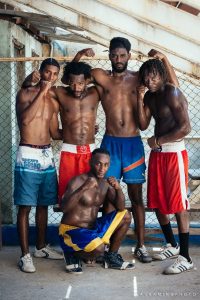
Talent is at a high level and pervasive. Many of the boxers at Rafael Trejo have placed in regional championships and trained alongside current pros like the great, although underactive, Yuriorkis Gamboa, two-division champion, Rances Barthelemy, and Light Heavyweight contender, Sullivan Barrera, who earned his first professional loss against Andre Ward earlier this year.
Héctor Vinent, a two-time Olympic gold medalist and two time World Amateur Champion, trains young teen and pre-teen prospects every afternoon.
And while politics are generally a taboo topic upon first encounters, it’s virtually inescapable here. The facility itself lends its name from Rafael Trejo González, a young university student who was killed while leading marches against the dictatorship of Gerardo Machado.
There’s also an announcement wall at the front of the gym posting several documents, including one fronted by the faces of Hillary Clinton and Barack Obama under an all-caps title, La Subversión Política Contra Cuba (the gym’s administration did not know who authored the document, and it was later removed).
As a national pastime, boxing is one of the most popular sports in Cuba, perhaps second only to baseball. Yet certain aspects of competition, such as personal fame and prize money, were deemed at odds with the the Revolution’s Marxist ideals and in 1962, Fidel Castro banned participation in all professional sports.
Some boxers defected in pursuit of the pro circuit, but the majority stayed behind and expanded their country’s amateur pool, creating a dominating force within international competitions. In 2013, the ban was modified. Elite boxers can now join a semi-pro league and receive sponsorship money, but retain the ability to participate in the Olympics.
As policy and leadership continues to change in both the United States and Cuba, the future of some of these boxers remains to be seen. The most skilled will likely continue a path towards career boxing, utilizing the high level of talent and support within their country until they turn pro.
Others have already supplemented their income by working other jobs–a lifestyle familiar even to those in the States–thanks to the booming tourist industry.
One boxer at Rafael Trejo named Randy, aged 25, decreased his training time in favor of working at a cigar factory and taking cooking classes on the side.
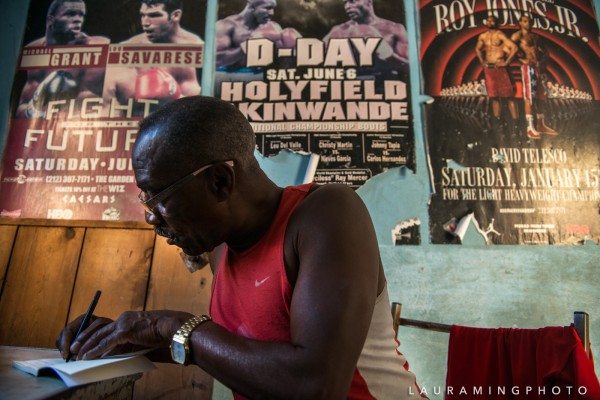
“I tell my friends, I can bring you to my house, feed you, share with you everything I have… but money. I don’t have any of that so I need to find something else to do. Maybe I can cook and work in a restaurant that serves tourists,” said Randy.
According to Cuba’s National Statistical Office there has been a 74 percent increase in American travelers from 2009 to 2014.
With Cuba’s recent re-entry into the professional sports realm, the death of Fidel Castro earlier this week, and fledgling signs of diplomacy with the United States appearing just this year, these photos taken before that time may serve as a reference point for later comparison.
Already, the boxers in these photos have reported changes in their streets–more tourists, more redevelopment plans, more hotels–and have relayed hopes that it all translates to more personal opportunities.
To see more of Laura’s Cuban boxing photos, visit: http://www.lauramwong.com/enlaluchita



